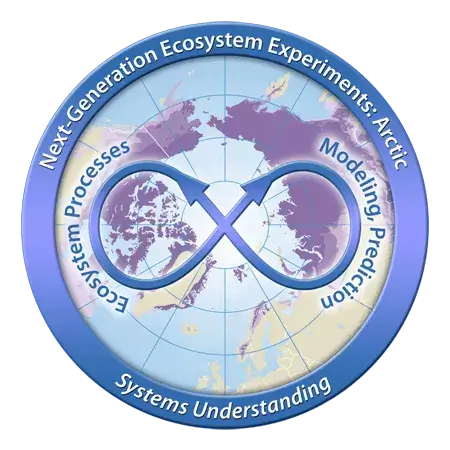The Arctic is a historically understudied biome that holds at least twice as much carbon as the atmosphere. Arctic amplification is warming the Arctic three to four times faster than the rest of the world, and increasingly frequent wildfires and widespread degradation of permafrost are impacting ecosystem structure and function.
The NGEE Arctic project has an overarching goal to support the mission of the US Department of Energy’s (DOE’s) Biological and Environmental Research (BER) program to advance a robust, predictive understanding of Earth’s systems. To do this, NGEE Arctic has been tasked with the delivery of a process-rich ecosystem model that can simulate the evolution of Arctic ecosystems at the scale of a high-resolution Earth system model (ESM) grid cell in DOE’s Energy Exascale Earth System Model (E3SM).
Over Phases 1–3, observations made by the NGEE Arctic team across a gradient of permafrost landscapes in Arctic Alaska improved the representation of tundra processes in the land surface component of E3SM (the E3SM Land Model, ELM). Model improvements emphasized unique aspects of permafrost environments and explored reductions in model complexity while retaining predictive power. The Arctic-informed ELM developed by NGEE Arctic was used to make novel predictions on processes ranging from permafrost thaw to soil biogeochemical cycling to Earth system feedbacks associated with the unique characteristics of tundra plants.
The fourth and final phase of NGEE Arctic began in October 2024. In Phase 4, the NGEE Arctic team is evaluating our new predictive understanding developed in Phases 1–3 under novel conditions across the Arctic domain. In collaboration with partners at long-term, pan-Arctic research sites, we are examining whether an Arctic-informed ELM can faithfully simulate interactions among surface and subsurface processes at site, regional, and pan-Arctic scales. Our Phase 4 science aims to answer an overarching question that necessitates the spatial and temporal breadth of an ESM: ‘What are the Earth system feedbacks from interacting processes across a rapidly warming Arctic?’ In turn, we are using a variety of tools to dynamically extend and evaluate ELM inference, including data synthesis and pan-Arctic model evaluation, reintegration of code with an evolving E3SM, scaling across heterogeneous Arctic landscapes, and the appropriate representation of the impacts of increasingly frequent Arctic disturbances. At the end of Phase 4, we will deliver an unprecedented predictive model that will have been evaluated against pan-Arctic observations.

